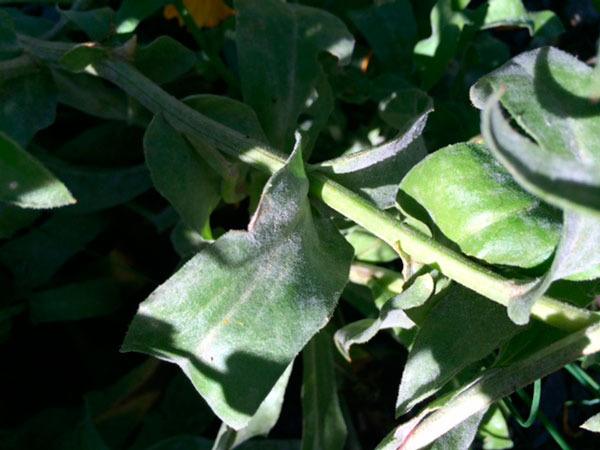Fall has arrived and it is time to tidy up after the summer gardening season. Clean-up, clean-up, clean-up: the most important thing you can do for the success of next year’s gardens and orchards. Remove and dispose of diseased plants, vegetables and fruits. Compost only disease-free materials. Allowing plants, fruits and vegetables to remain in or on the soil invites disease problems in the coming year.
Sharpen and store tools. To avoid damaged hoses and pipes, disconnect and store soaker hoses, drain irrigation systems and insulate around irrigation valves. Plan next year’s garden layout to ensure appropriate crop rotation, optimum use of sunny areas and maximum air circulation.
Powdery mildew
Powdery mildew is more prevalent in the local area this year and the fungi often survive through the winter. Following are some basics you should know to avoid powdery mildew.
What is powdery mildew and why does it occur?
The fungi that causes powdery mildew typically lives on the outer surface of the plant and derives nutrition from the plant. They are obligate parasites, meaning that they only can grow on living plant tissue.
Because the fungi can survive the winter, the first infections of powdery mildew often are found on the tips of new shoots in the spring.
Powdery mildew affects a large number of flowering plants. The fungi produce a white, powdery coating on leaves, buds, shoots and flowers. The powdery coating is made up of spores.
The spores are wind blown to other parts of the same plant or other plants of the same species. Powdery mildew fungi are host specific; for example, the mildew on roses will not spread to dogwood or lilac and vice-versa.
Infected leaves frequently are distorted in shape and smaller than normal. On severely infected plants, leaves become yellow, shrivel and die.
Powdery mildew spores require no external moisture for germination, as do many other fungi. The disease is more prevalent in crowded plantings with poor air circulation, in damp, shaded areas and where nitrogen content in the soil is high. Powdery mildew grows quickly when days are warm and nights are cool, favoring moderate temperatures (65-85 degrees) and humid air.
Most powdery mildews are external infections and can be controlled. Clip out the infected areas, dispose of infected leaves and stems; do not compost. Clean tools used on plants with powdery mildew. Spraying an infected plant with water can reduce the amount of powdery mildew because the spores rupture when in water.
Several fungicides are effective in managing powdery mildew; however, the fungicide must be registered for the specific host plant. As with all pesticides, “the label is the law.” Be sure to follow all label directions if a chemical control is used.
This is a beautiful time of year on the Olympic Peninsula — take time to enjoy it!
Judy English is a Washington State University-certified Clallam County Master Gardener.



